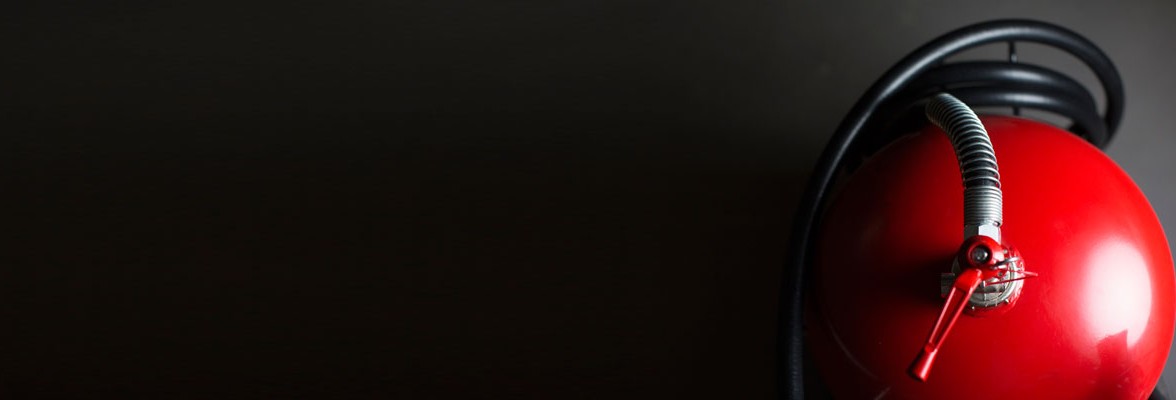YOUR CART
- No products in the cart.
Subtotal:
$0.00
BEST SELLING PRODUCTS

Fire extinguishers are necessary tools for protecting ourselves and our belongings from fire. They’re critical in commercial establishments, such as restaurants, schools and office buildings, as they help protect employees, visitors and valuable business assets.
Understanding fire extinguisher pressure gauges and proper maintenance helps keep your fire extinguisher working during a fire outbreak. This article discusses how to read a fire extinguisher pressure gauge, what the different zones mean and some essential maintenance tips to keep in mind.
Fire extinguisher gauges measure the pressure of a fire extinguisher’s contents. In simpler terms, they show if there is enough force to shoot the contents of the fire extinguisher during a fire. Most fire extinguishers have pressure gauges, except CO2 fire extinguishers, which cannot be tested by measuring pressure and must be weighed instead.
Pressure gauges are important for several reasons.
Keeping the correct fire extinguisher pressure is necessary for maintaining safety. A fire extinguisher with low or high pressure may not work as expected, which can be risky in an emergency and spread the fire. Fire pressure gauges can warn you about the pressure levels, and if they are at an abnormal level, you can refill or repair the extinguisher so it works properly in emergencies.
Regularly maintaining and monitoring the pressure gauge can improve the lifespan of your fire extinguisher and help prevent unplanned expenses, making it a cost-saving measure.
Pressure gauges are a quick and reliable way to assess a fire extinguisher’s readiness. If the indicator is outside the green zone, the extinguisher may not be helpful in a critical situation.
Pressure gauges affect a fire extinguisher’s usefulness. The extinguisher may not work properly at high or low pressure, which can affect its firefighting capability. Fire extinguisher pressure gauges can also improve employees’ safety awareness. Staff can read the pressure gauge to understand how fire extinguishers work, enhancing their safety awareness and emergency response skills.
Fire extinguisher gauges help you decipher the optimal level of your fire extinguisher. They are divided into three parts — recharge zone, green zone (in the center) and overcharged zone. To do a fire extinguisher gauge reading, look at where the gauge indicator needle is pointed:
If the gauge is in the red zone on the left, it is in the recharge zone. This means it has already been used or the pressure has leaked. An undercharged fire extinguisher does not have the pressure to push out the fire suppressant and will need to be charged.
A fire extinguisher in the green zone means it is charged correctly and ready to use. The green zone is in the middle, and your needle should be pointed there.
If the needle points toward the red zone on the right, it indicates an overcharged fire extinguisher that is under too much pressure. This signifies danger because an overcharged unit can cause leakages or even cylinder explosions.
Fire extinguisher issues can be significant, and emergencies are not the time to discover them. Inspect your fire extinguisher gauge regularly to ensure it is always in working order when you need it. Here are some things to do and look out for when maintaining your fire extinguisher:

You do not want to be in an emergency and realize that your extinguisher is faulty. Here are some reasons why regular inspections of fire extinguishers are important.
The Occupational Safety and Health Administration (OSHA) regulations mandate that employers properly place, maintain and test portable fire extinguishers to ensure they are easily accessible by employees in an emergency. Businesses must adhere to these industry standards, as failure to do so may lead to legal consequences. The legal implications of neglecting fire extinguisher inspections significantly outweigh the cost of regular maintenance.
Fire extinguishers need to be inspected to verify that they function properly. Regular inspection helps pinpoint potential issues early, preventing small problems from turning into big ones. A properly maintained fire extinguisher ensures your safety in an emergency.
A correctly maintained fire extinguisher will spring into action during an emergency. By inspecting it frequently, you’ll know it will function properly if and when the time comes to use it. So, make sure to always look out for pressure levels, damage, tamper indicators and signs of leakages.
With well-maintained fire extinguishers in optimal working conditions, you can fight fire more effectively. Their capabilities and the peace of mind they bring give you the confidence needed in emergency situations.
Are you looking to purchase a fire extinguisher or other fire safety equipment for your commercial establishment? At National Fire Supply, we offer a wide range of fire safety equipment, including fire extinguishers, tamper seals, fire extinguisher cabinets, hole punches, vehicle brackets and sprinkler parts.
These products give you peace of mind and the utmost safety in critical conditions. Furthermore, our e-commerce capabilities make it easy to purchase our products so you can get them quickly and without stress. Browse our selection and place your order online today, or contact us with any questions.